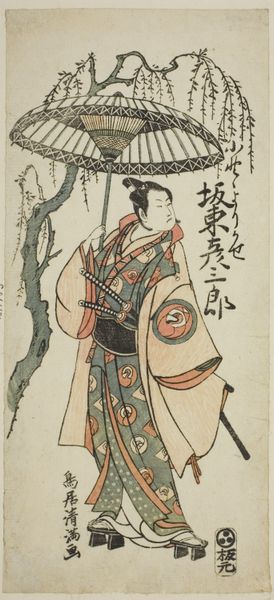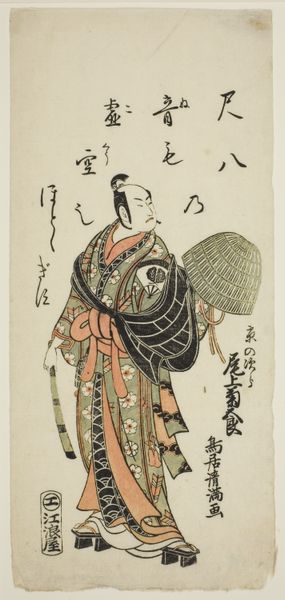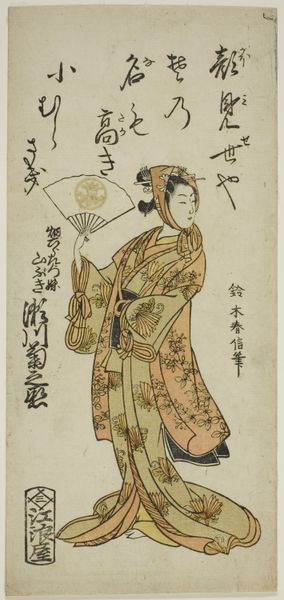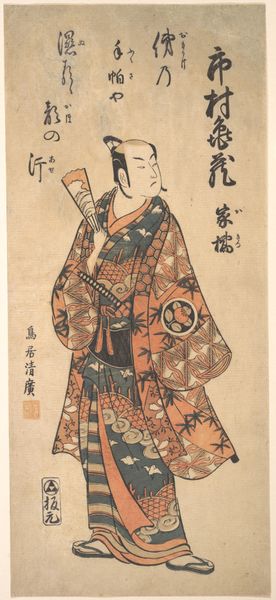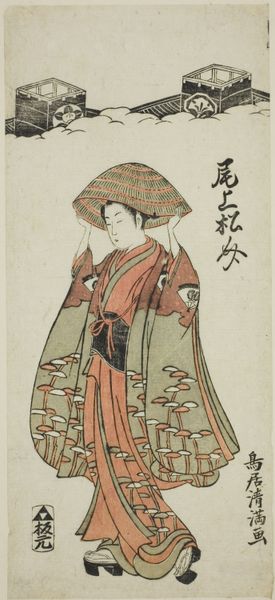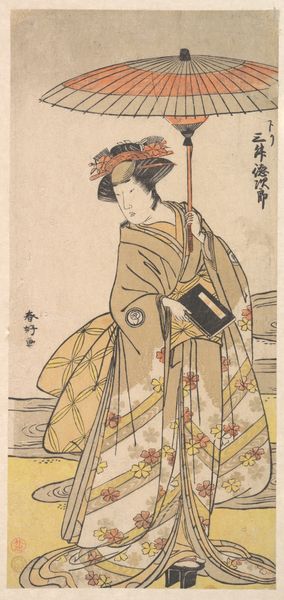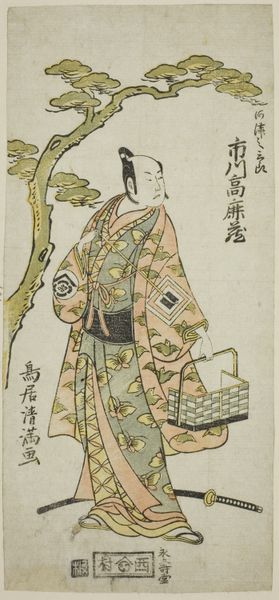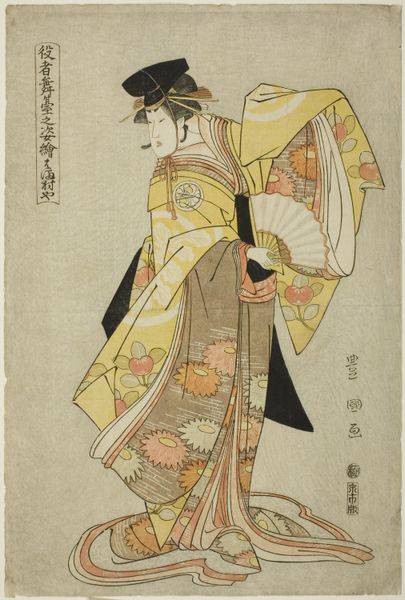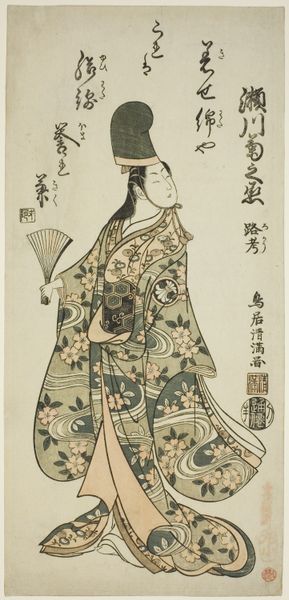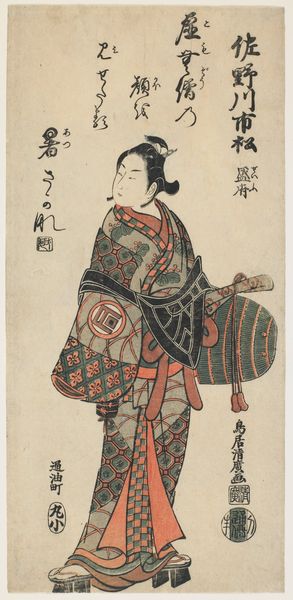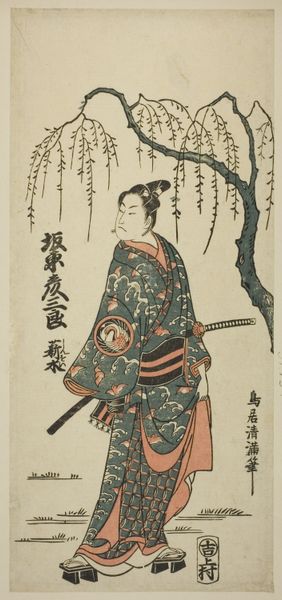
The Actor Nakamura Nakazo I as Kamaya Buhei in the play "Fude Hajime Soga no Tamazusa," performed at the Nakamura Theater in the first month, 1768 1768
0:00
0:00
print, woodcut
#
portrait
# print
#
asian-art
#
ukiyo-e
#
figuration
#
woodcut
Dimensions: 12 × 5 3/8 in.
Copyright: Public Domain
Editor: This woodblock print, made by Torii Kiyomitsu in 1768, depicts the actor Nakamura Nakazo I in a Kabuki role. It's striking how the flat planes of color and the elaborate costume create this sense of controlled theatricality. What significance do you see in portraying actors in this manner? Curator: This *ukiyo-e* print exists as more than just an individual artwork, right? Think about its place in a larger economy of images. Kabuki actors were essentially celebrities, and these prints functioned as promotional material, similar to film posters today. How do you think the socio-political context of Edo-period Japan shaped the aesthetic and function of these actor portraits? Editor: That makes sense. So it's not just about capturing likeness, but also about constructing and marketing an image, turning actors into almost mythical figures. Curator: Precisely. Kiyomitsu belonged to the Torii school, which was instrumental in developing *ukiyo-e*. Their style was known for a kind of bold linearity, perfectly suited for capturing the dynamic poses and flamboyant costumes of Kabuki performers. It also democratized art, offering affordable images to a broad audience. Are there ways we still use images today to convey specific identities or values that were only accessible for privileged social echelons back then? Editor: Definitely. Fashion photography or even influencer culture could be considered today's democratization of representation. You’ve made me think about this piece in terms of how popular culture, marketing, and artistic expression were already deeply intertwined centuries ago. Curator: It shows us that what we might see as “art for art’s sake” often exists within intricate social and economic networks. Reflecting on how these historical dynamics influence art can inform our understanding of today’s visual landscape.
Comments
No comments
Be the first to comment and join the conversation on the ultimate creative platform.
